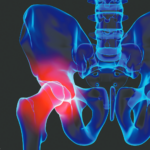
One of the more interesting conversations that we have in our practice surrounds the discussion of alcohol consumption while a patient is prescribed methotrexate. As doctors, we are used to reviewing the risks and benefits of a particular drug—how it works, what kind of results to expect, and which common side effects may occur. The information regarding methotrexate is straightforward. Watch for nausea, mouth sores, and hair thinning and make sure to have your blood work drawn regularly. At this point in the conversation, I raise my admonition for the patient to curtail his or her alcohol consumption. This is a critical moment, a time when the tenor of the conversation can change, sometimes fairly abruptly. Patients are accustomed to hearing physicians discuss what they consider to be medically pertinent issues. For some patients however, this does not include their alcohol consumption, which they consider to be a private matter.

This issue recently came to light following a conversation I had with a patient of mine. Neville is a delightful, seventy-year-old, retired executive with newly diagnosed rheumatoid arthritis (RA). A strikingly tall man, he has traveled the world and describes himself as a “bon vivant.” His name easily identifies him as a British ex-pat and his accent, as he describes it, is “pure Manchester.” He carefully listened to my reasoning regarding the choice of methotrexate as the best treatment option for his RA. All was going well until we came to the discussion of alcohol consumption. I suggested that he restrict his intake to no more than “a few” alcoholic beverages per week. He responded that he liked his nightly martinis (plural!). He seemed puzzled by my advice, but did not say anything more. The following week, Neville e-mailed me this link from a British National Health Service (NHS) website that contained the following nugget:
“National guidelines recommend that patients taking low-dose weekly methotrexate (by any route of administration) should ensure their consumption of alcohol is well within maximum national limits (two to three units a day for women and three to four units a day for men, with at least one or two alcohol-free days per week). Patients with psoriasis or psoriatic arthritis should not drink more than six units of alcohol per week because they may have a higher risk for liver toxicity than those with other inflammatory conditions.”1
This site led me to the British Society for Paediatric and Adolescent Rheumatology website where the following information is dispensed:
“Ideally your child should not drink alcohol while taking methotrexate. This is because methotrexate and alcohol are both metabolised in the liver the two combined puts extra strain on the liver. However, as long as your child is legally old enough to drink alcohol an occasional glass of wine or beer is unlikely to be harmful. Excessive regular alcohol and binge drinking should be avoided.”2
On the other hand, the ACR guidelines state:
“Alcohol significantly increases the risk for liver damage while taking methotrexate, so alcohol should be avoided while on this medication.”3
Frankly, I was surprised by these liberal British interpretations of how much alcohol a patient can safely imbibe. You can do the math; five days of alcohol consumption per week is allowed with up to four drinks consumed per day. Twenty drinks per week! An informal survey of my own division members found a wide-ranging set of opinions regarding the definition of the word “avoided” in the ACR guidelines. Does it imply a total abstinence from alcohol or just cutting back a “wee bit?” A rheumatologist from New York whom I once met on at panel discussion of this subject once defined “appropriate” consumption as being equal to one less drink that his own daily alcohol intake. If his consumption on that particular evening was any indication, his patients had nothing to be concerned with!
The Spa Treatment
Getting back to the British guidelines, I began to wonder about other ways that American practice styles might differ from those of our European colleagues. I needed to look no further than how we treat osteoarthritis, a condition with a limited set of options available to American practitioners. Pain relievers, exercise, shoe inserts, and, when all else fails, surgery. I envy our European colleagues. They seem to have a wider array of interesting options to offer their long-suffering patients. I learned about the European way of managing musculoskeletal pain through my experiences with another patient, Madame D. She was a lovely, French-speaking, middle-aged Swiss national whom I treated for generalized osteoarthritis. In the first few years of our relationship, I offered her every new nonsteroidal antiinflammatory drug (NSAID) that came on the market. They all seemed to provide her with some time-limited benefit.
However, Mme. D had better ideas about dealing with her joint pain. We developed this yearly ritual where she would ask me to write a letter on her behalf to the Swiss Consulate requesting medical coverage for spa therapy. Apparently, her spouse, long deceased, had worked in Consular Affairs and this was one of the perks of the job. Off she went; one summer to Gstaad, another to St. Moritz, and to many other magnificent Swiss resorts renowned for their charming surroundings, sulfurated sparkling waters, medicinal mineral baths, and mud. She would return to Boston feeling fresh and invigorated, at least for a couple of months before the benefits wore off.
By late October, as the nor’easter storms swept along the New England coast where she lived, she would rely on her supply of topical NSAID crèmes, which she would replenish while overseas. Mme. D was a believer in the utility of topical NSAIDs years before their adoption in the U.S. She faithfully applied topical diclofenac over her sore knees before consuming her daily bottle of Vichy Célestins mineral water. She maintained that the crèmes worked best in combination with a tall glass of Vichy Célestins mineral water. It had to be Vichy—no generic substitution! After all, Mme. D explained how the original spa at Vichy was built by Julius Caesar, and over the centuries was frequented by many seeking its medicinal magic, including the emperor Napoleon. The Vichy water’s striking mineral taste reflects its passage through the extraordinarily rich soil of the region. It flows at a constant temperature of 17.3° C under the rock formation that once formed the Convent of Celestine. Cheers!
For those European patients who prefer a more physical approach to their treatment regimen, they can choose from a menu of thermal baths, thermal showers, steam baths, thermal gas inhalation, and whirlpool mud therapies. Looking back, this Euro-style regimen must have done Mme. D. some good. She lived a full life, and when she died at age 91, her medication list, save her crèmes, was still blank. She never required any surgical procedures to treat her severe knee osteoarthritis or, as they say in Europe, gonarthritis.
I often wondered whether the Swiss government was wasting taxpayer money covering her spa therapy, mineral water supply, and topical gels. Is there any objective evidence to support such a holistic approach for treating osteoarthritis, the bane of the aging skeleton? Can a patient’s subjective improvement from wallowing in sulfurous mud or relaxing in radon-enriched carbon dioxide baths be measured objectively?
In 2009, French rheumatologists working at Aix-les-Bains (where, 90 years earlier, Jacques Forestier plied his trade and described the benefits of gold therapy in RA) performed a meta-analysis of 19 randomized clinical trials of spa therapy based on the clinical guidelines of the French National Authority for Health and the European League Against Rheumatism (EULAR). They concluded that spa therapy (also known by its august appellation, balneotherapy) provided benefits that lasted for at least 12 weeks in treating chronic low back pain, stable RA, ankylosing spondylitis, fibromyalgia, and osteoarthritis of the knees and hands. A Cochrane meta-analysis of balneotherapy for the treatment of RA was less sanguine. This review found that most of the studies were methodologically flawed to some extent. However, one study observed a significant short-term benefit for pain reduction when comparing mineral baths to cyclosporine A. I can only imagine seeking a prior authorization from one of our friendly health insurers for the coverage of a patient’s spa therapy.
I have asked many of my RA patients who have successfully weaned off steroids what they thought about the concept of taking prednisone in addition to their methotrexate. To a person, they related how they never wanted to go back on steroids.
Don’t Spare the Steroids?
But now, some of our European colleagues are challenging one of the most basic tenets of clinical rheumatology; that is, whether or not corticosteroids should be considered to be a disease-modifying drug therapy for RA. A recent study from the Netherlands analyzed the effect of adding 10 mg of prednisone daily to a weekly regimen of methotrexate in patients with RA.4 The authors concluded that the addition of prednisone not only improved the patients’ functional status, but it also significantly reduced the degree of radiographic damage observed after two years. This paper, published in the Annals of Internal Medicine, follows a line of several similar smaller studies claiming a newfound status for using corticosteroids in patients with RA. An accompanying editorial opined that, “a very short period of high-dose [emphasis added] glucocorticoid therapy (for example, 60 mg of prednisone daily tapered to 7.5 mg daily over 6 weeks), when used as part of combination therapy, can control symptoms and radiographic disease progression to the same extent as anti–tumor necrosis factor therapy.”5 Is this heresy or innovation? What happened to the long-held notion of always searching for a “steroid-sparing agent” for our patients? After all, most clinicians try to minimize their patients’ steroid exposure in order to mitigate potential side effects.
Since the release of this paper, I have asked many of my RA patients who have successfully weaned off steroids what they thought about the concept of taking prednisone in addition to their methotrexate. To a person, they related how they never wanted to go back on steroids. They remembered the weight gain, the facial swelling, and the mood swings. Yet, to my surprise, the authors of the Annals study downplayed the issue of steroid-related side effects; none of these unpleasant toxicities were even listed or discussed in the results section of their paper. This issue of whether or not to consider steroids as disease-modifying drugs will require considerable further study. The repercussions of a positive outcome would have a seismic effect on the management of RA.
Neville’s Dilemma
My patient Neville is not a big fan of steroids. The pain that he occasionally experiences from a slowly healing vertebral compression fracture reminds him of his personal aversion to the drug. As he says, he prefers taking his methotrexate “neat, no prednisone please.”
We reached a compromise on his martini consumption; he promised to follow the guidelines of the British Society for Paediatric and Adolescent Rheumatology, which permit an occasional alcoholic beverage. I countered by requiring him to have monthly liver function studies. Neville loves the idea of being treated like an adolescent.
Dr. Helfgott is physician editor of The Rheumatologist and associate professor of medicine in the division of rheumatology, immunology, and allergy at Harvard Medical School in Boston.
References
- McEntee J. Can patients drink alcohol whilst taking long-term low-dose methotrexate? Published January 4, 2012. Available at www.nelm.nhs.uk/en/NeLM-Area/Evidence/Medicines-Q–A/Can-patients-drink-alcohol-whilst-taking-long-term-low-dose-methotrexate. Accessed May 14, 2012.
- British Society for Paediatric and Adolescent Rheumatology. Methotrexate for rheumatological conditions. Published March 2011. Available at www.bspar.org.uk/DocStore/FileLibrary/PDFs/BSPAR%20guidance%20for%20methotrexate%202012.pdf. Accessed May 14, 2012.
- Cannon M. Methotrexate. Updated August 2009. Available at www.rheumatology.org/practice/clinical/patients/medications/methotrexate.asp Accessed May 14, 2012.
- Bakker MF, Jacobs JW, Welsing PM, et al. Low-dose prednisone inclusion in a methotrexate-based, tight control strategy for early rheumatoid arthritis: A randomized trial. Ann Intern Med. 2012;156:329-339.
- Kirwan JR. Combination therapy including glucocorticoids: The new gold standard for early treatment in rheumatoid arthritis? Ann Intern Med. 2012;156:390-391.
